
Crystals
Scope & Guideline
Illuminating the World of Crystals Through Research
Introduction
Aims and Scopes
- Crystal Growth and Characterization Techniques:
Research on various methods for the synthesis and growth of crystals, including physical vapor transport, hydrothermal methods, and laser techniques, alongside advanced characterization techniques such as X-ray diffraction, electron microscopy, and spectroscopic methods. - Materials Science and Engineering:
Exploration of the mechanical, thermal, and electrical properties of crystalline materials, including high-entropy alloys, superconductors, and piezoelectric materials, with a focus on their applications in electronics, energy storage, and environmental technologies. - Nanostructured and Hybrid Materials:
Investigation into the synthesis and application of nanomaterials and hybrid systems, particularly in the context of photocatalysis, sensors, and biomedical applications, highlighting the role of crystal structure in determining material properties. - Theoretical and Computational Studies:
Utilization of computational methods and theoretical frameworks to understand the structural, electronic, and optical properties of crystals, including first-principles calculations and molecular dynamics simulations. - Environmental and Energy Applications:
Research on the application of crystalline materials in environmental remediation, energy conversion, and storage, including studies on photocatalytic activity and thermoelectric properties.
Trending and Emerging
- Nanostructured Materials and Applications:
There is a growing interest in the development and application of nanostructured crystalline materials, particularly for use in electronics, photonics, and catalysis, driven by their unique properties at the nanoscale. - Machine Learning and Data-Driven Approaches:
The integration of machine learning and artificial intelligence methodologies in predicting crystal growth and properties is becoming increasingly prevalent, representing a significant trend in the field. - Sustainable and Green Materials:
Research focusing on environmentally friendly synthesis methods and the application of sustainable materials, including biodegradable composites and waste-derived materials, is gaining momentum. - Multifunctional and Hybrid Materials:
The exploration of multifunctional materials that combine properties such as piezoelectricity, magnetism, and conductivity for advanced applications in sensors and energy storage is an emerging trend. - Advanced Characterization Techniques:
The adoption of cutting-edge characterization methods, such as in situ techniques and synchrotron radiation, is increasingly emphasized, highlighting the need for detailed structural and functional analysis of materials.
Declining or Waning
- Traditional Inorganic Crystal Chemistry:
While still relevant, the conventional studies focused solely on inorganic crystal structures are being overshadowed by more interdisciplinary approaches that incorporate nanotechnology and hybrid materials. - Basic Mineralogy Studies:
The emphasis on pure mineralogical research has decreased as the journal shifts towards more applied science, including the development of functional materials and their applications. - Classical Theoretical Crystallography:
The focus on classical crystallography theories is waning, as more journals and research groups adopt modern computational techniques and machine learning approaches to predict and analyze crystal properties. - Historical and Archaeological Mineral Studies:
Research related to the historical and archaeological aspects of crystals, while still published, is becoming less frequent compared to studies focused on contemporary materials and applications. - Low-Tech Crystal Growth Techniques:
Research on basic, low-tech crystal growth methods is declining as the field moves toward more sophisticated and controlled methods that yield higher quality and performance materials.
Similar Journals

JOURNAL OF ELECTRONIC MATERIALS
Unveiling the Future of Materials ScienceWelcome to the Journal of Electronic Materials, a premier publication in the field of materials science. Published by Springer, this esteemed journal has been a beacon for groundbreaking research in electronic, optical, and magnetic materials since its inception in 1972. As an established resource, it boasts a commendable impact factor and categorically ranks in the second quartile (Q2) in key areas such as Condensed Matter Physics and Electrical and Electronic Engineering, as well as holding a respectable third quartile ranking in fields related to Electronic, Optical, and Magnetic Materials and Materials Chemistry. Researchers, professionals, and students can access a wealth of knowledge as we publish original articles, reviews, and cutting-edge research that push the boundaries of science and technology in these critical fields. Stay informed and engaged as we explore advancements that shape the future of electronic materials.

Computational Condensed Matter
Fostering Collaboration in Condensed Matter ResearchComputational Condensed Matter, a reputable journal published by Elsevier, serves as a critical platform for advancing the understanding of condensed matter physics and related fields. Since its inception in 2014, the journal has become a pivotal resource for researchers and professionals dedicated to exploring electronic, optical, and magnetic materials, as well as materials chemistry and general materials science. With its current standing in the Q3 quartile across multiple categories in 2023, it ranks within the 60th percentile for Materials Science (miscellaneous) and the 54th percentile for Condensed Matter Physics in Scopus, reflecting its growing influence and relevance in the scientific community. The journal aims to publish high-quality, peer-reviewed articles that can foster innovation and collaboration in computational methods applied to condensed matter systems. Researchers interested in cutting-edge insights and methodologies will find Computational Condensed Matter to be an invaluable addition to their academic resources. For those seeking to contribute to or stay informed about the latest advancements in the field, this journal is a must-read.

Acta Crystallographica Section B-Structural Science Crystal Engineering and Materials
Driving excellence in structural science and engineering solutions.Acta Crystallographica Section B: Structural Science, Crystal Engineering and Materials, published by the International Union of Crystallography, stands as a pivotal resource for researchers and professionals in the fields of materials science, crystal engineering, and structural biology. With an e-ISSN of 2052-5206, this journal is recognized for its contributions to advancing knowledge on the structural aspects of materials, drawing significant interest from the Q2 category in several disciplines, including Atomic and Molecular Physics and Materials Chemistry. As the field evolves through innovative research approaches and methodologies, the journal actively covers developments within the scope of materials synthesis, characterization, and application in various sectors including medicine and electronics. Though not an open-access journal, it is entangled in the scientific discourse, ensuring that key studies are accessible to academic institutions and professionals globally. With a commitment to excellence, its impact across multiple quartile rankings signifies its influence and importance for scholars eager to contribute to cutting-edge research.

Physics and Chemistry of Solid State
Fostering Interdisciplinary Dialogue for Tomorrow's ScientistsPhysics and Chemistry of Solid State is a distinguished open access journal published by Vasyl Stefanyk Precarpathian National University in Ukraine, dedicated to advancing research in the fields of condensed matter physics, materials science, and physical and theoretical chemistry. Since its inception in 2000, the journal has provided a platform for the dissemination of innovative ideas and original research findings, contributing significantly to the global scientific community. With a variety of access options, it facilitates the sharing of knowledge and collaboration among researchers worldwide. The journal has garnered recognition with respectable rankings in Scopus, positioning itself among the significant publications in its domain, particularly noted for its contributions to materials science and condensed matter physics. As it moves through its converged years from 2018 to 2024, Physics and Chemistry of Solid State aims to foster interdisciplinary dialogue and prepare the next generation of scientists to tackle complex challenges in solid-state research.
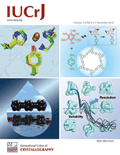
IUCrJ
Exploring Interdisciplinary Connections in CrystallographyIUCrJ, published by the International Union of Crystallography, is a leading open-access journal dedicated to advancing knowledge in the fields of Biochemistry, Chemistry, Condensed Matter Physics, and Materials Science. Since its inception in 2014, IUCrJ has quickly established itself as a prestigious platform for high-quality research, achieving a remarkable record as a Q1 journal across its categories in 2023. With an increasing impact in the scientific community, evidenced by impressive Scopus rankings, IUCrJ offers unparalleled access to groundbreaking discoveries and methodologies that contribute to the understanding and application of crystallography in various disciplines. The journal’s commitment to open access ensures that research is readily available to a global audience, fostering collaboration and innovation in the scientific community. IUCrJ is an essential resource for researchers, professionals, and students aiming to stay at the forefront of crystallographic research and its interdisciplinary applications.

RUSSIAN JOURNAL OF INORGANIC CHEMISTRY
Unveiling Innovations in Materials ChemistryThe Russian Journal of Inorganic Chemistry is a distinguished publication that delves into the fundamental and applied aspects of inorganic chemistry. Published by MAIK Nauka/Interperiodica/Springer, this journal has established itself as a vital resource for researchers, professionals, and students alike, contributing significantly to the fields of Inorganic Chemistry, Materials Science, and Physical and Theoretical Chemistry. With an ISSN of 0036-0236 and an E-ISSN of 1531-8613, the journal is indexed for easy access and citation. Though the journal currently operates under a subscription model, its commitment to disseminating high-quality research and fostering scientific discourse remains steadfast. The journal has been maintaining a consistent record since its inception, and its positioning in the Q3 quartile across various chemistry categories in 2023 underscores its relevance in the academic community. As it continues through its converged years from 1996 to 2024, the Russian Journal of Inorganic Chemistry plays a pivotal role in enhancing the understanding and advancement of inorganic chemistry, making it an indispensable tool for anyone engaged in this dynamic field.
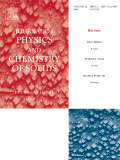
JOURNAL OF PHYSICS AND CHEMISTRY OF SOLIDS
Transforming Knowledge in Physics and ChemistryJOURNAL OF PHYSICS AND CHEMISTRY OF SOLIDS, published by Pergamon-Elsevier Science Ltd, is a distinguished international journal that has been at the forefront of disseminating cutting-edge research in the fields of physics, chemistry, and materials science since its inception in 1956. This journal, which is recognized for its high impact in the Q2 category across multiple subjects—including Chemistry (miscellaneous), Condensed Matter Physics, and Materials Science—serves as a vital platform for researchers, professionals, and students to engage with significant advances in solid-state physics and chemistry. With Scopus rankings placing it in the top 15% of its field across various domains, the journal plays a crucial role in shaping the scientific dialogue surrounding materials properties, synthesis, and applications. Although it does not currently offer open access options, the presented research is widely recognized for its quality and relevance, ensuring that published works contribute meaningfully to ongoing scholarly discussions.
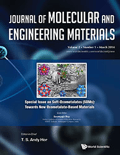
Journal of Molecular and Engineering Materials
Catalyzing Progress in Materials Engineering and Molecular ResearchThe Journal of Molecular and Engineering Materials, published by World Scientific Publishing Co Pte Ltd, is a leading peer-reviewed journal that focuses on the intricate relationship between molecular science and engineering practices. With the ISSN 2251-2373 and E-ISSN 2251-2381, this journal aims to foster the exchange of cutting-edge research and developments within the fields of materials science, molecular engineering, and related applications. Although the journal currently does not operate under an Open Access model, it remains a vital resource for researchers, professionals, and students seeking in-depth knowledge and innovative methodologies in material design and engineering. The journal's esteemed reputation is reflected in its commitment to publishing high-quality research that addresses contemporary challenges and opportunities in material science, thereby contributing to advancements in technology and industry.
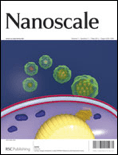
Nanoscale
Advancing the Frontiers of Nanoscience.Nanoscale is a premier academic journal published by the Royal Society of Chemistry, dedicated to advancing the field of nanoscience and nanotechnology. With both its ISSN (2040-3364) and E-ISSN (2040-3372) ensuring wide accessibility, the journal is renowned for its high-impact research contributions, reflected in its impressive 2023 Impact Factor and prestigious Q1 ranking in both Materials Science (Miscellaneous) and Nanoscience and Nanotechnology categories. Since its inception in 2009, Nanoscale has fostered a collaborative platform where leading researchers from around the globe share their innovative findings across a multitude of topics spanning from material synthesis to applications in nanotechnology. The journal not only serves as a valuable resource for professionals, researchers, and students but also actively engages the academic community in discussing emerging trends, thus shaping the future of nanoscience. Situated in the heart of the UK at Thomas Graham House, Science Park, Milton Rd, Cambridge CB4 0WF, Nanoscale remains a key publication for those looking to keep abreast of the latest breakthroughs in an ever-evolving field.
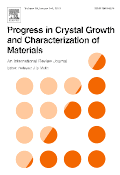
PROGRESS IN CRYSTAL GROWTH AND CHARACTERIZATION OF MATERIALS
Charting New Territories in Crystal ResearchPROGRESS IN CRYSTAL GROWTH AND CHARACTERIZATION OF MATERIALS, published by Pergamon-Elsevier Science Ltd, is a premier journal dedicated to the advancement of knowledge in the fields of condensed matter physics and materials science. With an ISSN of 0960-8974 and an E-ISSN of 1878-4208, this esteemed journal has been at the forefront of research since its inception in 1990 and continues to publish cutting-edge findings until 2024. Recognized as Q1 in Condensed Matter Physics and Q2 in Materials Science (miscellaneous) as of 2023, it holds impressive Scopus rankings, placing it in the 89th and 81st percentiles of its respective categories. The journal aims to foster innovation and facilitate the exchange of ideas among researchers and professionals by showcasing significant developments in crystal growth and material characterization methodologies. Although it currently does not offer open access, the journal remains a vital resource for academia, providing comprehensive insights that drive forward the fields of physics and materials science, thereby benefiting both seasoned researchers and students alike.